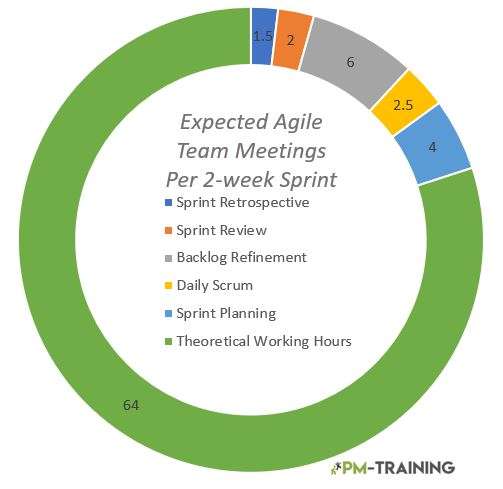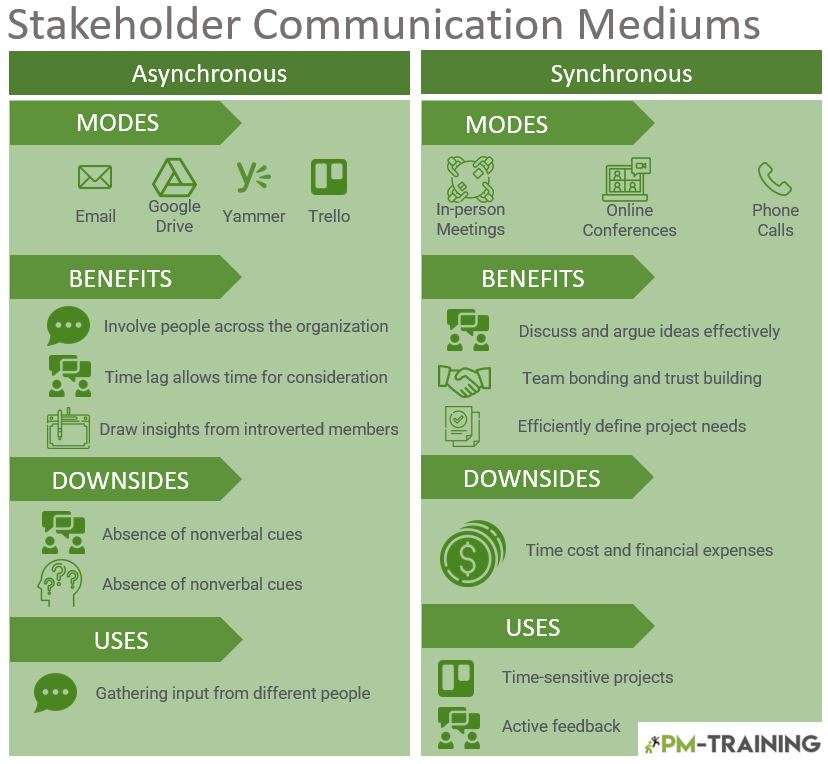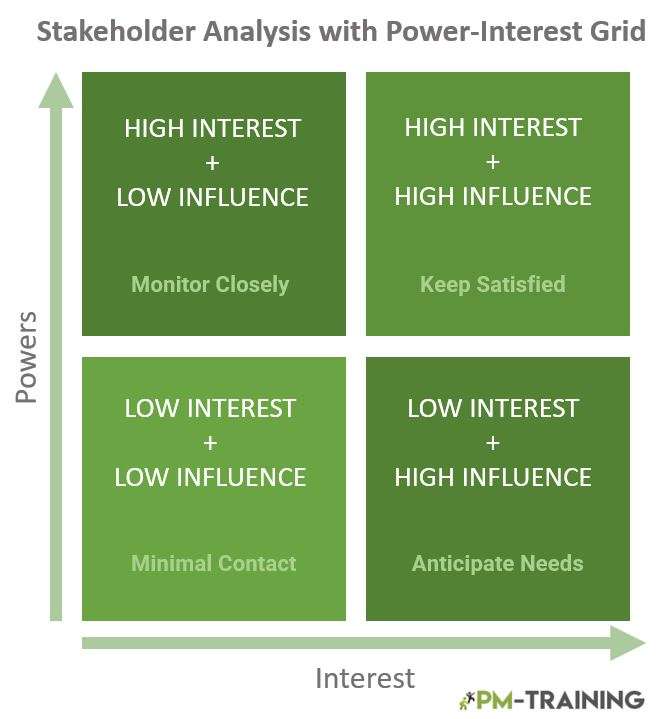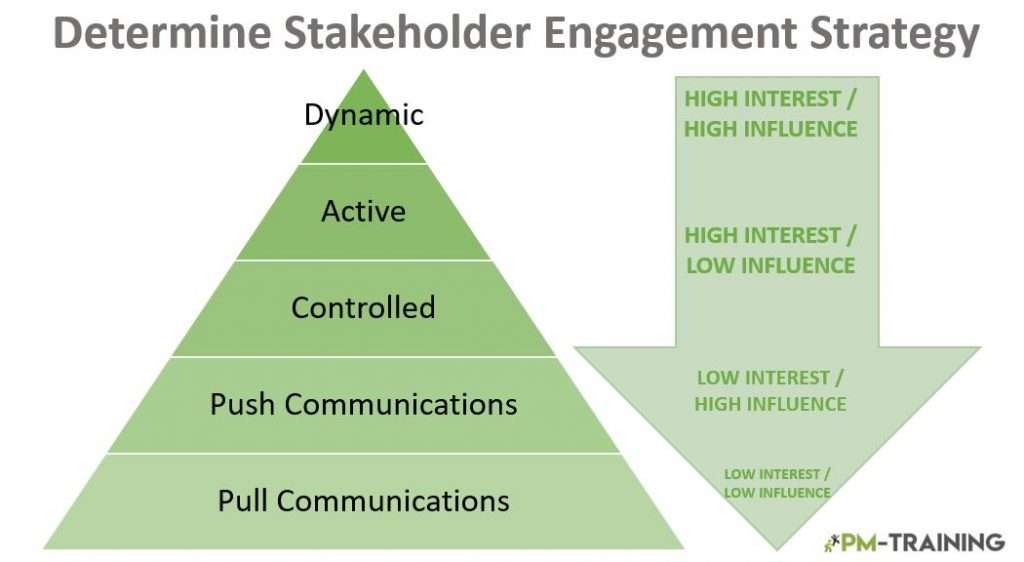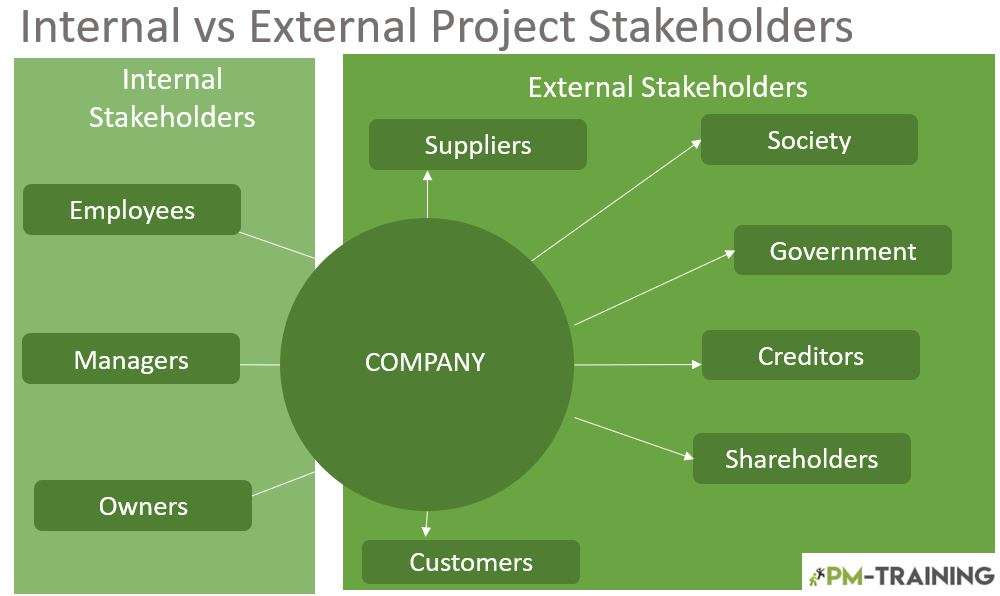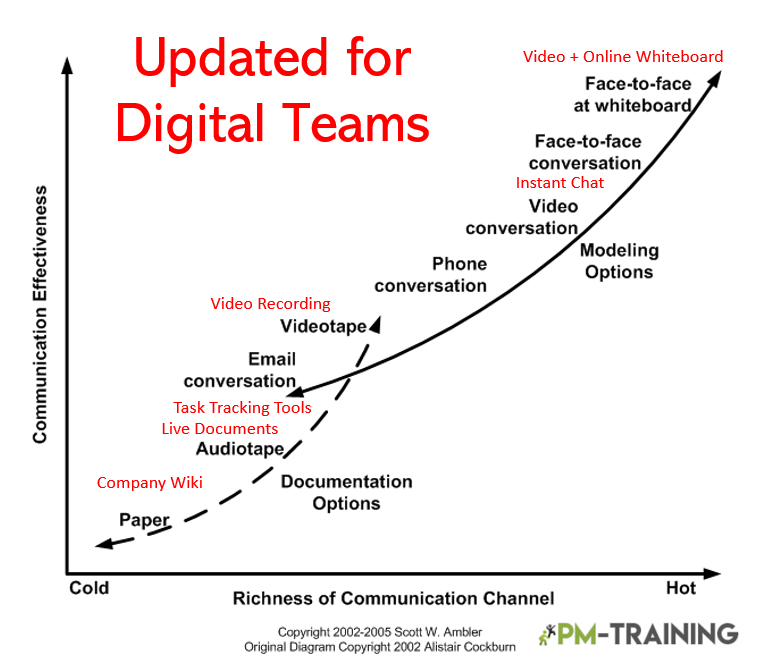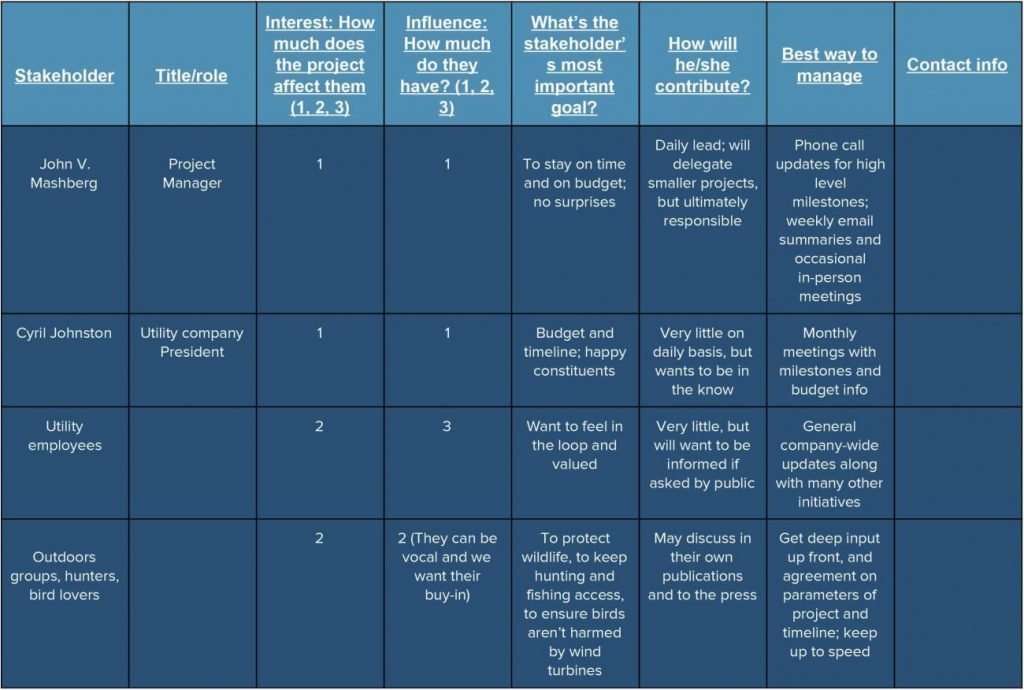Creating a stakeholder communication plan is one of the first critical steps towards a successful project. However, a big part of coming up with an effective stakeholder communication plan is knowing what pitfalls to avoid.
Yet, from my experience with project consulting and research, I have observed that many project managers make the same mistakes at this stage, and this can potentially derail even the most excellent initiative.
- Why Is Communication Important When Managing Stakeholders?
- Internal Stakeholders Communication Plan Mistakes to Avoid
- External Stakeholder Communications Plan Mistakes to Avoid
- Remote Project Team Communication Plan Mistakes to Avoid
- Stakeholder Communication Plan Template – Google Sheets
- Stakeholders Communication Plan Examples
Why Is Communication Important When Managing Stakeholders?
The role of proper communication in the project success equation can’t be overstated. Communication is vital in securing engagement from stakeholders, keeping projects within budget and deadlines, and it ensures that both you and your stakeholders share the same expectations.
To become a successful project manager, I have narrowed down 15 significant mistakes to avoid when creating a stakeholder management plan, which we will look at next. I have categorized them based on the fact that stakeholder communication requirements vary depending on whether you’re dealing with external stakeholders, internal stakeholders, or a remote project team.
Internal Stakeholders Communication Plan Mistakes to Avoid
An organization’s internal stakeholder are the people who will be directly, significantly, and financially affected by the success or lack thereof of a project’s performance. Internal stakeholders include shareholders, employees, and resource managers.
When creating your stakeholder management plan it’s important to remember that these internal stakeholders have their own separate set of communication requirements. Here’s what to avoid:
#1. Under-communication
It’s dangerous to assume that employees, top management, and other internal stakeholders have enough knowledge about the project because of their high level of involvement with the operations and strategy of the organization.
For starters, this may result in failure to secure top management support because they don’t fully understand the projects strategic plan and how it impacts them. You need to ensure the key message is being understood so they are interested.
In addition, not communicating enough leads to a lack of productivity if team members are not sure about what they need to do. That being so, always factor in everything that needs to be communicated and don’t leave any gaps.
#2. One Way Communication
Your internal stakeholder communication plan should not only focus on detailing what you think needs to be communicated. Neither should you standardize the plan across the entire organization. On the contrary, you should develop a communication strategy that ensures two-way communication.
The best approach is to ask top management about their needs with respect to information reporting and communication frequency. You should also set aside time to meet and have informal discussions with team members. That way, everyone will be on the same page about different points of contact.
#3. Improper Use of Meetings
Of course, your project communication plan needs to outline how often information needs to be shared, but that doesn’t mean you should schedule as many meetings as possible. A project team will already have planned meetings so having extra meetings on top of this could be considered unproductive. Understanding the current meetings purpose and expected outcomes can help you understand when you can align your needs.
Too many meetings are a huge time sink, but then again, not setting up enough meetings means you won’t have enough opportunities to communicate important information about the status of your project.
To get this part right, it’s important to consider each stakeholder group and create a stakeholder map. This will help know whether to plan for weekly or monthly meetings.
#4. Complicating the Communication Process
Your stakeholders should never have to feel that some aspects of your communication plan are unnecessary or cumbersome. For instance, it’s not practical to hold a video conferencing call when your team is just a few steps away. Not only does this limit productivity, but it complicates your communication plan. A simple stakeholders communication plan is always best.
#5. Using The Wrong Communication Medium
Not all communication methods are created equal. Effective communication with your stakeholders depends on having the right communication matrix and understanding stakeholder communication requirements.
That means differentiating the types of communication at your disposal and specifying which to use in each instance. Sometimes individual stakeholder such as project sponsor will require a personal email vs broadcast.
You don’t want to send out a memo just to check up on team members as this can be confusing. To make everything clearer, your plan should pay attention to who’s in charge of each specific type of communication, the target audience, and the communication medium.
External Stakeholder Communications Plan Mistakes to Avoid
Your external stakeholders include your customers, suppliers, contractors, creditors, the community, and government entities. While these individuals or groups exist outside of your organization, they can still impact your project’s long-term success. As such, it’s crucial to avoid these next five external shareholders communication plan mistakes.
#6. Poor Stakeholder Analysis
When you profile your external stakeholders wrongly, you end up communicating with them in the wrong way. Therefore, it’s best to use a power/interest matrix when creating your communication plan. In simple terms, key stakeholder analysis is critical to understand those that have both a high interest in and power over your project activities.
The list of external stakeholder should include big clients and major suppliers. Make sure you have as stakeholder management strategy to communicate regularly with them.
On the other hand, the rest of your list of stakeholders will only need enough communication to keep them satisfactorily in the loop.
#7. Failure to Establish External Stakeholder Expectations
The way you communicate with your external shareholders is different from your internal communications. We have talked about having a communication matrix, and it also applies here. But first you have to establish the reason behind communicating with your external influencers.
Communication goals can be anything from attracting sales from customers to improving knowledge about your business. The end goal determines the best communication medium and format. Failure to establish communication goals means you won’t be able to measure the effectiveness of your plan.
#8. Not Prioritizing Feedback From External Stakeholders
Creating an effective project communication plan involves making sure your internal stakeholders know which direction you’re headed, but don’t forget external stakeholders in the process. It’s crucial to also understand the requirements of your external influencers and include them in your plan. Otherwise, you may be forced to redo all your work down the line if the scope changes because you didn’t prioritize feedback from external stakeholders.
#9. Poor Level of Engagement with Stakeholders
Establishing an effective communication plan requires you to be forthright with your external stakeholders about your capacity to handle the project. That means being truthful about your team’s abilities, talents, and weak points. Otherwise, you will create unrealistic expectations that are driven by baseless estimates. This can lead to failure and your external stakeholders can lose their faith and trust in you.
Always revise your stakeholder communication plan to make sure all your expectations and estimates are based on facts. If possible, meet with your team to discuss what they can and can’t do, and use statistics from previous projects to accurately gauge the expected productivity level of your project.
#10. Overpromising
Your communication plan should not make unreasonable promises that will set high expectations you can’t meet. It’s understandable, wanting to please your external shareholders but you’re setting yourself up for failure by promising unrealistic goals.
Sometimes, these external factors may pressure you into agreeing to impractical decisions, but you should always resist this. It’s better to under-promise and over-deliver, so always be realistic with yourself and your external stockholders.
Remote Project Team Communication Plan Mistakes to Avoid
Managing a remote project team successfully hinges on having the right communication plan. With most organizations adopting a remote working approach, this is now more important than ever.
Managing a project team within the normal office setup is challenging to begin with, let alone when your team members are distributed haphazardly across the country or globe. But avoiding the following remote project team communication plan can help you accomplish your goals.
#11. Not Laying the Foundation First
It’s not always easy keeping team members on the same page throughout the project. That’s why it’s important to put the groundwork in first. After all, it’s not like you can call your remote team members in for a quick meeting in the office when there’s a need.
Your communication plan should, therefore, include a preliminary meeting that fully outlines the goals and objectives of the project. Gather everyone in one place and make sure they understand their role, the project expectations, timeline, deadline, aim, and vision. This minimizes communication mishaps that may take too long to correct because members are working from different locations.
#12. Micromanaging
Because they can’t always meet or see their project team, project managers usually overcompensate by saying too much. If you plan to streamline communication by going into elaborate details about the people that should communicate with each other and how and when they should communicate, you might want to think again.
Micromanaging the communication process can actually hinder project progress. You don’t want team members to put their tasks on hold to check if their email or communication method adheres to the plan. Instead, provide enough details about what you consider acceptable contact without including too much fine print.
Stakeholder Communication Plan Template – Google Sheets
Make a copy of our free stakeholder communications plan template here
#13. Infrequent Communication
It’s important to strike the right balance between micromanaging and infrequent communication.
Plan to give your team members the amount of communication they need, otherwise, you will find it difficult to keep them on track. It is as they say – out of sight and out of mind. Therefore, be sure to plan for weekly meetings and daily emails to keep everyone in the loop.
#14. Lack of Accountability
Your project team may feel they don’t need to adhere to your communication plan since they are not always in your line of sight. It’s your job to ensure your project communication plan holds everyone accountable by establishing roles and responsibilities within the team. Make sure your plan sets down strict deadlines for tasks that need to be completed, and choose a team leader that will further communicate deadlines to keep everyone on track.
#15. Not Using Technology Enough
Effective communication with a remote project team depends entirely on the use of technology. Scheduling a sporadic call once in a blue moon will probably not cut it. Your plan also needs to document the use of collaboration apps and video conferencing calls. This will help you maintain project visibility and so will using project management software that can be centrally accessed by all team members.
Stakeholders Communication Plan Examples
In a nutshell, a well-formulated stakeholder communication plan is essential because the cost of ineffective communication to your organization is not something you can ignore. Now that you know which significant mistakes to avoid when creating a stakeholders communication plan, you may very well need a communication plan template to get started.
Fortunately, there are many online project communication plan examples that will point you in the right direction. However, be sure to tailor your plan to the project’s needs and the needs of your stakeholders.
Avoiding these mistakes mentioned above will help you come up with a plan that ensures you are communicating with all key stakeholders effectively. However, speaking of what to avoid, there are some pitfalls to watch out for when managing stakeholders once the project is in progress. These include the following:
- Not managing your time effectively. It’s normal for a project manager to always have a lot on their plate, but planning your day and schedule helps keep you on track.
- Not engaging enough with team members and stakeholders. How well you engage with your team members and stakeholders helps secure the best outcome for your project. That’s because highly engaged employees are more productive and engaging stakeholders helps you deliver more customers.
- Resisting change. Projects don’t always go according to plan and that’s why it’s important to be flexible and prepared for the unexpected. This will keep you in control even when the project’s scope changes.
- Trying to cater to everyone’s requests. Different project stakeholders may have various requests that can distract you from the project. The last thing you want is getting blamed if deadlines are missed, so it’s important to only help or make contributions when you have the time.
- Doing too much at once. As a project manager, you may find yourself saddled with more than one project in the same timeframe. Be careful not to take on more work than you can handle, since it will be stressful, which affects the quality of your work.
Effective communication is an invaluable component of every successful project. Hopefully, you now have everything you need to achieve the objectives of your project and satisfy your stakeholders’ expectations.


